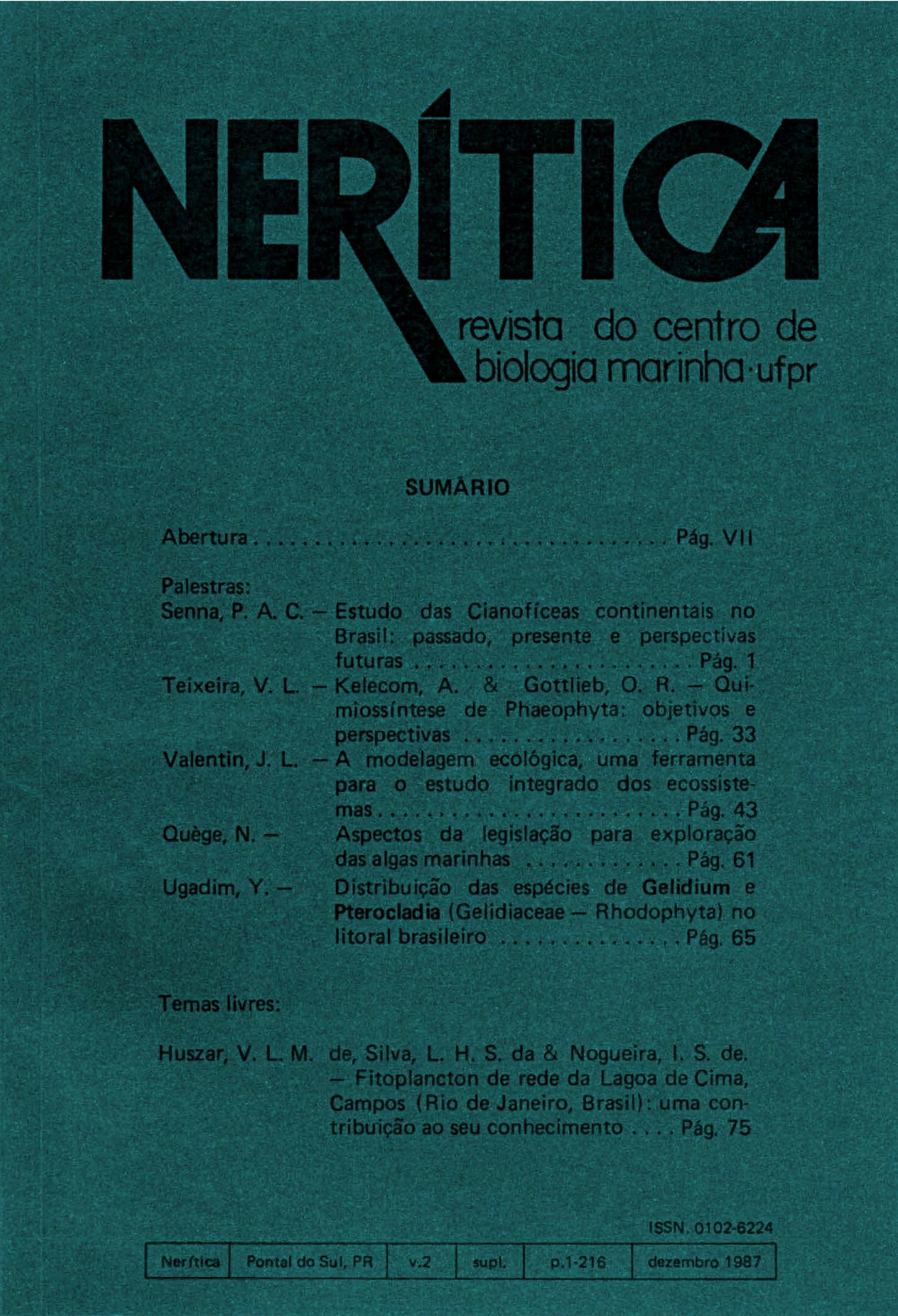Ecological modelling, an objective tool for an integrated study of ecosystems
DOI:
https://doi.org/10.5380/rn.v2i0.84937Keywords:
Ecosystem, modelling, phytoplankton, marine ecologyAbstract
The concepts of ecological modelling and its use for marine ecosystem dynamic studies are presented. The necessary steps for modelling primary biomass variations are described as theorical examples: (a) to gather quali-quantitative data on structure of the system (state variables) and on factors (forcing function), (b) a conceptual diagram of the phytoplankton system is established including compartments (nutrients, phytoplankton, herbivorous zooplankton) and energy fluxes (arrows between compartments: photosynthetic rate, respiration, grazing...) measured in situ or in vitro, (c) mathematical equations of the model are built up for each variable as a function of time: then, these equations are programmed and processed on computer with real data, (d) the result of simulation is compared to a serie of real data and the model is modified in case of excessive divergency. Ecological modelling is not only a tool for prevision, but is mainly an objective method for guiding researchs, formulating hypothesis, revealing deficiencies and orienting the sampling. Finally, on acount of its multidisciplinarity, ecological modelling is a tool of communication and the best vehicle of information between researchers of different areas.





